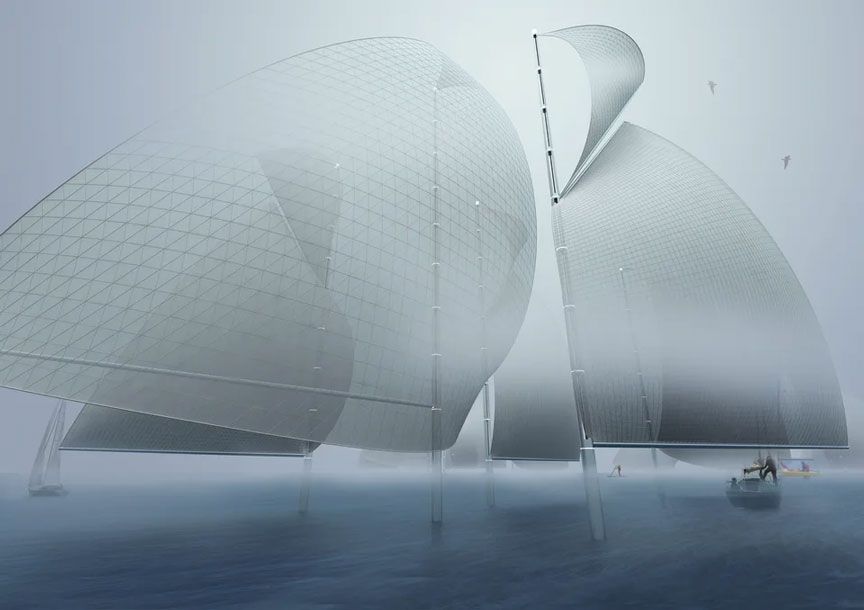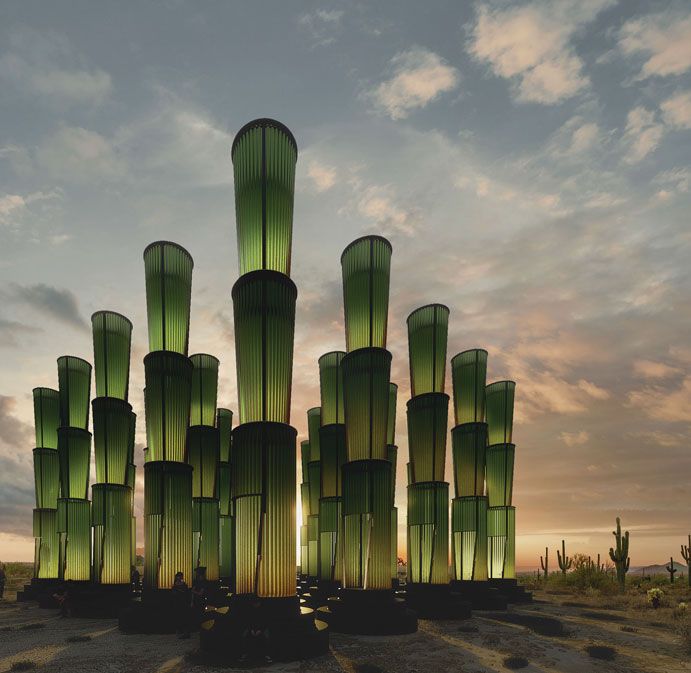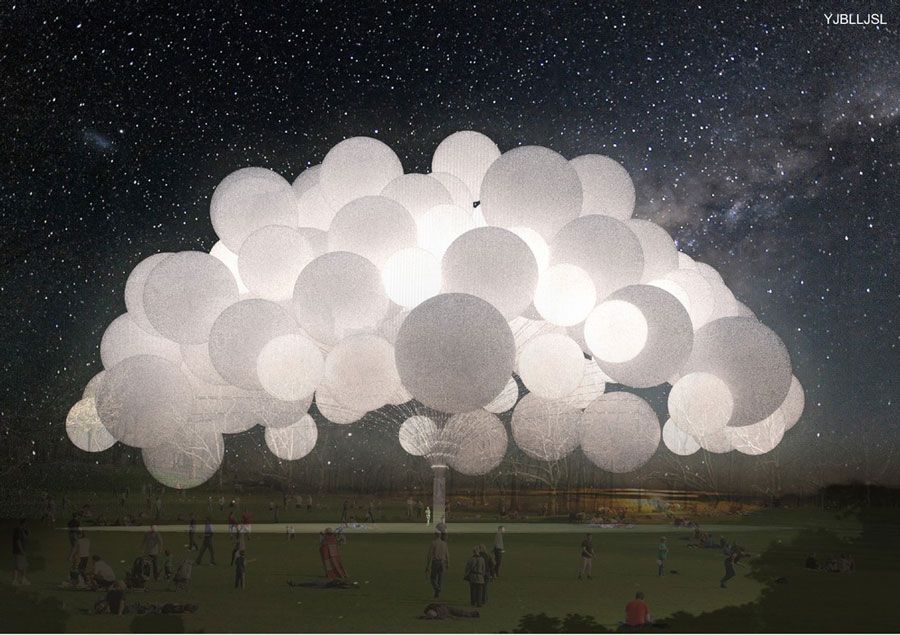The Land Art Generator initiative (LAGi) is a competition celebrating innovation and design beyond the norm. This site-specific competition invites contributors to create public art that is not only beautiful, but can efficiently generate clean water and renewable power. The competition is open again this year, but in the meantime, here are a few of the fantastic contributions from past contests.
Using the coastal features allowed designers to conceive innovative methods of generating solar, wind power, wave and tidal energy.

Regatta H2O was the first place winner designed by Christopher Sjobergand Ryo Saito. The structure can collect moisture from the coastal fog to store and transport 112 million litres of drinking water. While also generating electricity from the oscillating belts. It draws on the form and shape of ships' sails.
“Beauty is of course in the eye of the beholder, but both powerful forms and landscapes elicit strong emotional attachments, and the experience of them can inspire people into action,” the organizers said. “While each may be evaluated on their own merits and qualities, rarely do they come together without controversy.”

LAGi 2020 produced CACTi, designed by Jaeyual Lee, Haemee Han, Daeho Lee and Beomki Lee. This structure can create 137 litres of biofuel per tower by using algae photoreactors. The 2020 competition challenged designers to create shelters and housing that could also generate clean energy and water.

The 2012 competition had Freshkills Park in New York as their site-specific challenge. The park was a former landfill which has been transformed into a “beautiful cultural destination that will make the park a symbol of renewal and an expression of how our society can restore balance to its landscape.”
The trees generate electricity as well as provide lighting and shade while being better suited to the area than natural trees. It was made from reclaimed and recycled materials. The trees harvest energy as they sway and move in the wind.
Competitions like this spark innovation and align with the United Nations Sustainable Development Goals for Affordable and Clean Energy and Clean Water and Sanitation, as well as Sustainable Cities and Communities. In the wake of climate change, innovative design and sustainable design are the face of the future, but also an absolute necessity if we are to preserve that future.
The competition is open again this year. For more information about this year's site, check the website here.
